-
Sandia hosts annual Robot Rodeo
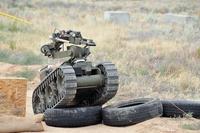
Sandia National Laboratories is hosting the seventh annual Western National Robot Rodeo and Capability Exercise, a lively and challenging five-day event that draws civilian and military bomb squad teams from across the country to see who can most effectively defuse dangerous situations with the help of robots.
-
-
Risk assessment of shale gas fracking to biodiversity
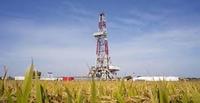
Fracking, the controversial method of mining shale gas, is widespread across Pennsylvania, covering up to 280,000 km² of the Appalachian Basin. New research explores the risks posed to biodiversity including pollution from toxic chemicals, the building of well pads and pipelines, and changes to wetlands.
-
-
New Jersey faces costly water infrastructure upgrades
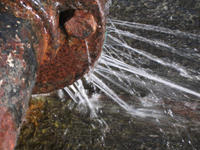
Before Hurricane Sandy hit New Jersey, state officials knew they had much work ahead of them to update the state’s water infrastructure. The damage Sandy inflicted only highlighted the inadequacies of New Jersey’s outdated wastewater, stormwater, and drinking water infrastructure. Upgrading the system will be costly, but not doing so will be costlier.
-
-
Improving close air support for faster, more precise airstrikes
Air-ground fire coordination — also known as Close Air Support or CAS — is a dangerous and difficult business. While its tools have become more sophisticated, CAS has not fundamentally changed since the First World War. Now, Persistent Close Air Support (PCAS) program aims to improve air-to-ground fire coordination, but could revolutionize military technology development and deployment as well.
-
-
U California, Berkeley students win National Student Steel Bridge Competition
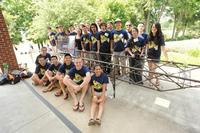
The weekend of 31 May residents of Washington State watched as engineers began erecting a temporary steel bridge over the Skagit River, to replace the 160-foot span of a 4-lane bridge that had collapsed a week earlier, after being struck by an over-height truck. Just sixty miles away, on the campus of the University of Washington in Seattle, 620 civil engineering students erected their own temporary steel bridges in a competition to demonstrate their engineering skills. For the second consecutive year and for the second time in the past seven years, a team of students from the University of California, Berkeley captured the title as champions of the ASCE/AISC National Student Steel Bridge Competition (NSSBC).
-
-
Israel taps 10th graders’ cybersecurity skills to expand cybersecuity recruitment pool
Israel has been subjected to a growing number of cyberattacks – and has itself used cyber-warfare against its adversaries. To make sure it stays ahead, Israel is accelerating its recruitment and development efforts in cybersecurity. Among other initiatives, the country is expanding the pool of potential cyberwarriors by going into high school classrooms to tap the cyber skills of tenth-graders.
-
-
Detecting explosives, not toothpaste
Researchers want airports, border checkpoints, and others to detect homemade explosives made with hydrogen peroxide without nabbing people whose toothpaste happens to contain peroxide. This is part of the challenge faced in developing a portable sensor to detect a common homemade explosive called a FOx (fuel/oxidizer) mixture, made by mixing hydrogen peroxide with fuels.
-
-
Environmental group sues State Department for Keystone XL-related files
The Sierra Club has announced it is suing the State Department for files related to an environmental review draft of the Keystone XL pipeline. The group tried to gain access to the files through the Freedom of Information Act, but the request was denied, so the group filed the suit on Monday in the U.S. District Court in the Northern District of California.
-
-
TSA’s behavior detection program not cost effective: DHS IG

DHS Inspector General (IG) has released a 41-page report last week stating that the Transportation Security Administration (TSA) cannot ensure that its behavior detection program, known as the Screening of Passengers by Observation Techniques (SPOT) is objective or cost-effective.
-
-
Making jet fuel from switchgrass

The Energy Department’s National Renewable Energy Laboratory (NREL) is partnering with Cobalt Technologies, U.S. Navy, and Show Me Energy Cooperative to demonstrate that jet fuel can be made economically and in large quantities from a renewable biomass feedstock such as switch grass. The project could spur jobs in rural America, lead to less reliance of foreign oil.
-
-
Fighting effectively without committing war crimes
Combat troops must minimize the humanness of their enemies in order to kill them. They cannot be effective fighters if they are distracted by feelings of empathy for opponents. Indifference to the enemy, rather than loathing, however, may help prevent war crimes and provide troops with a better path back to healthy civilian lives, researchers say.
-
-
Studying rare Earth elements in Alaska may help make them less rare
A unique deposit of heavy rare Earth elements (REE) at Alaska’s Bokan Mountain could help scientists understand how rare Earth element deposits form, according to new research. Rare Earth elements are important, but scarce, elements used in components in many cutting edge electronic and defense technologies.
-
-
Better weather predictions for the U.S. Navy
In a development that should significantly affect fleet operations, the U.S. Navy has adopted a new global weather forecasting model. The Naval Global Environmental Model (NAVGEM)could inform Navy operations for years to come. It is particularly important as U.S. fleet presence increases throughout the Asia-Pacific region, known for intense weather events like typhoons.
-
-
Highly sensitive polymer detects IEDs
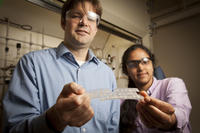
A chemical which is often the key ingredient in improvised explosive devices (IEDs) can be quickly and safely detected in trace amounts by a new polymer created by a team of Cornell University chemists. The polymer, which potentially could be used in low-cost, handheld explosive detectors and could supplement or replace bomb-sniffing dogs.
-
-
Protecting and climate proofing Europe’s coast
The coastline of EU member states extends over 17,000 kilometers. It is home to seventy million inhabitants. The estimated value of the assets within 500 meters from the coast rises to a staggering 1,000 billion Euros. An EU-funded science and engineering initiative is gathering all relevant scientific knowledge to develop a systematic approach to deliver a safe, natural, and climate-proof European coast.
-
More headlines
The long view
Encryption Breakthrough Lays Groundwork for Privacy-Preserving AI Models
In an era where data privacy concerns loom large, a new approach in artificial intelligence (AI) could reshape how sensitive information is processed. New AI framework enables secure neural network computation without sacrificing accuracy.
AI-Controlled Fighter Jets May Be Closer Than We Think — and Would Change the Face of Warfare
Could we be on the verge of an era where fighter jets take flight without pilots – and are controlled by artificial intelligence (AI)? US R Adm Michael Donnelly recently said that an upcoming combat jet could be the navy’s last one with a pilot in the cockpit.
The Potential Impact of Seabed Mining on Critical Mineral Supply Chains and Global Geopolitics
The potential emergence of a seabed mining industry has important ramifications for the diversification of critical mineral supply chains, revenues for developing nations with substantial terrestrial mining sectors, and global geopolitics.
AI and the Future of the U.S. Electric Grid
Despite its age, the U.S. electric grid remains one of the great workhorses of modern life. Whether it can maintain that performance over the next few years may determine how well the U.S. competes in an AI-driven world.
Using Liquid Air for Grid-Scale Energy Storage
New research finds liquid air energy storage could be the lowest-cost option for ensuring a continuous power supply on a future grid dominated by carbon-free but intermittent sources of electricity.
Enhanced Geothermal Systems: A Promising Source of Round-the-Clock Energy
With its capacity to provide 24/7 power, many are warming up to the prospect of geothermal energy. Scientists are currently working to advance human-made reservoirs in Earth’s deep subsurface to stimulate the activity that exists within natural geothermal systems.
